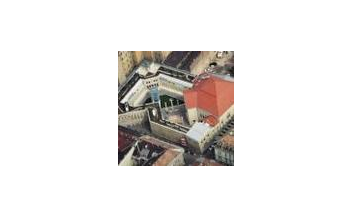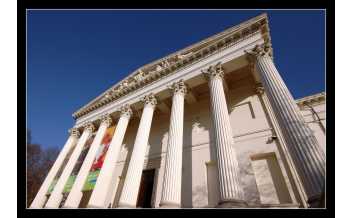Explore More
Activities
-
Caves of Aggtelek Karst and Slovak Karst,...
The variety of formations and the fact that they are concentrated in a...
-
Central Market, Budapest: All Year
Budapest’s largest indoor market sells everything from salami to souvenirs....
-
Déryné Bisztró, Restaurant, Budapest
Since opening its doors in 1914, Déryné Bistro has been a favourite...
-
Fertö / Neusiedlersee Cultural Landscape,...
The Fertö/Neusiedler Lake area has been the meeting place of different...
-
Fisherman's Bastion, Budapest
In the 19th century, Hungary turned 1,000 years old. To mark this milestone,...
-
Great Synagogue, Budapest
Budapest’s Great Synagogue is Europe’s biggest place of Jewish worship and an...
-
Heroes' Square, Budapest
The largest of its kind in Budapest, Heroes’ Square is a landmark of the city...
-
Holocaust Memorial Centre, Budapest
Budapest’s Holocaust Memorial Centre is one of the few institutions in the...
-
Hortobágy National Park - the Puszta, Hungary
The cultural landscape of the Hortobágy Puszta consists of a vast area of...
-
Hungarian National Museum, Budapest
Hungary’s National Museum contains relics from the nation’s history. It’s a...
-
Hungarian Parliament Building, Budapest
The home of Hungary’s parliament is one of Budapest’s most iconic buildings....
-
Matthias Church, Budapest: All Year
At the peak of the Várhegy hill, protected by the Fisherman’s Bastion, one...
-
Shoes on the Danube, Budapest
Shoes on the Danube is a chilling memorial to Hungarian victims of the...
-
St. Stephen's Basilica, Budapest
Tall spires, mummified hands, Med-style bistros? Remarkably, St Stephen’s...
-
Terror Haza Museum, Budapest: All Year
Probably the bleakest museum in Budapest, the House of Terror explores...
-
The Hungarian State Opera House
Also called the Budapest Opera House, the Hungarian State Opera House is one...













![Frank Paul Silye [CC BY-SA (https://creativecommons.org/licenses/by-sa/4.0)] Frank Paul Silye [CC BY-SA (https://creativecommons.org/licenses/by-sa/4.0)]](https://www.divento.com/35703-home_default/hortobágy-national-park-the-puszta-hungary.jpg)








